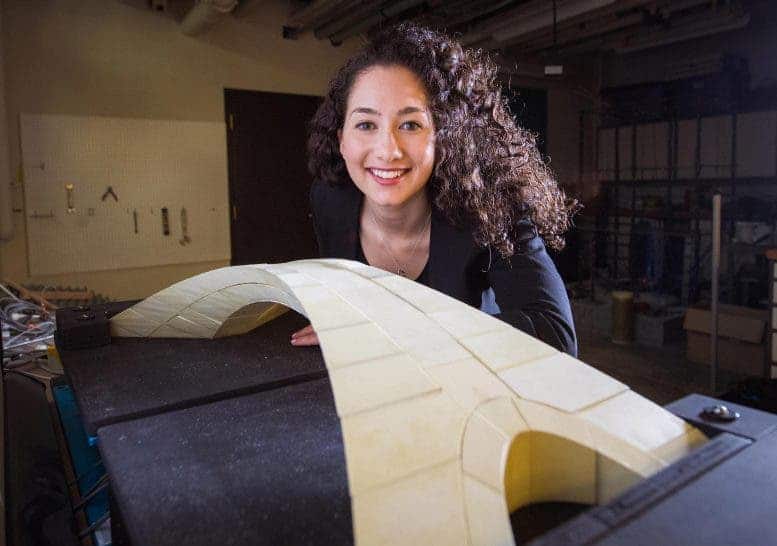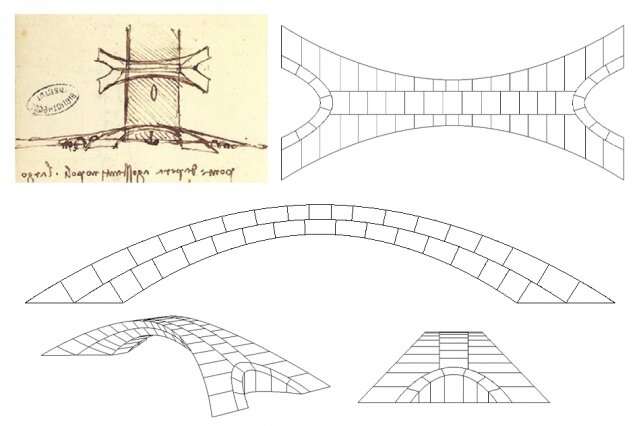A design created by the Italian polymath was brought to life with 3D printing. It worked splendidly.

A revolution that wasn’t
It’s been five centuries since Leonardo da Vinci released his works into the world, and they’ve never ceased to amaze us. Whether it’s art, anatomy, or engineering, da Vinci was truly ahead of his time — the archetype of the fabled “Renaissance man”, he was not only brilliant but also incredibly productive.
For a man of da Vinci’s caliber, there was never a shortage of work. Most of the time, da Vinci would work for wealthy patrons, like Ludovico Sforza, the Duke of Milan, who commissioned the famous “Last Supper” painting. But people from all over the world would ask for da Vinci’s services. The Sultan of the Ottoman Empire, Baiazid II, did not specifically ask for da Vinci, but the two would ultimately interact.
The Sultan sent word of a contract to build a bridge. The bridge would connect the capital city Constantinopole (Istanbul) with the neighboring city of Galata. It was a big project, and da Vinci relished his chance when he heard about it. He submitted a project to the Sultan — and it was a project unlike any other the world had ever seen.
It was 218 meters long (or 918 feet — although neither measurement system had been developed at the time), which would have made it the longest bridge in the world by a big margin. Not only this, but it proposed a style of design that was completely unheard of.

In Leonardo’s time, masonry bridges were typically supported by semicircular arches. Often times, bridges had one or two piers to support them — da Vinci’s bridge would have required 10. The concept was remarkable: a flattened arch, tall enough to allow sailboats to pass. Another innovation proposed by da Vinci was the use of abutments — structures used routinely in bridges today to support the lateral pressure of an arch or span. This would address one of the biggest problems bridges had at the time, stabilizing against lateral motions.
It was a complete revolution madness at the time. Da Vinci wrapped up his design and sent it to the Sultan — but the Sultan didn’t want it. He rejected it and went for a more conventional approach, rejecting the potential of revolutionizing bridge construction.
3D printing Leonardo
However, while da Vinci didn’t get the job, a group of MIT students set out to figure out whether the bridge could have worked or not.
In his letter to the Sultan, Da Vinci didn’t specify what materials he would have used. But the MIT team analyzed the materials and techniques available at the time, concluding that the bridge would have had to be made of stone because wood or brick couldn’t carry such a long load. Furthermore, as in the Roman bridges of old, no mortar would have been necessary — the bridge would stand on its own under the force of gravity.
The team decided on building a scale model, at a scale of 1 to 500 (making it about 32 inches long). A total of 126 blocks were 3D-printed; for the real thing, thousands of rocks would have been necessary.
“It was time-consuming, but 3-D printing allowed us to accurately recreate this very complex geometry,” Bast says.
“It’s all held together by compression only,” she says. “We wanted to really show that the forces are all being transferred within the structure,” which is key to ensuring that the bridge would stand solidly and not topple.
As with actual masonry arch bridges, the “stones” were supported by a scaffolding structure. After they were all in place, the structure was capable of supporting itself, and the scaffolding was removed. At the top of every arch, there was a crucial keystone.
“When we put it in, we had to squeeze it in. That was the critical moment when we first put the bridge together. I had a lot of doubts” as to whether it would all work, Bast recalls. But “when I put the keystone in, I thought, ‘this is going to work.’ And after that, we took the scaffolding out, and it stood up.”
“It’s the power of geometry” that makes it work, she says. “This is a strong concept. It was well thought out.”
Furthermore, it seems that Leonardo was aware that the area where the bridge was to be built was prone to earthquake. He also introduced uncommon features (such as the spread footing) into the design, which would increase the durability of the bridge in case of lateral movement.
The design seems to have everything it needs to work out, and the possibilities it raised were truly intriguing. Unfortunately, it never really caught wings, and the medieval world lost out.
Nowadays, Leonardo’s design wouldn’t really be of much use, since the materials we use today are so different from what is naturally available. But this just goes to show just how outstanding da Vinci’s mind truly was, and what beauties it was capable of producing.
Just one question remains: was Leonardo truly aware of what he proposed? Was it something he carefully considered, or simply a rough sketch? We don’t really know — and we probably never will. What we do know is that Leonardo’s stunning design could work.
“He knew how the physical world works,” Bast concludes.
The abstract is available online.



